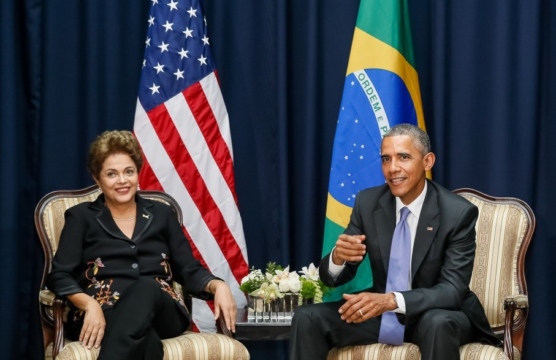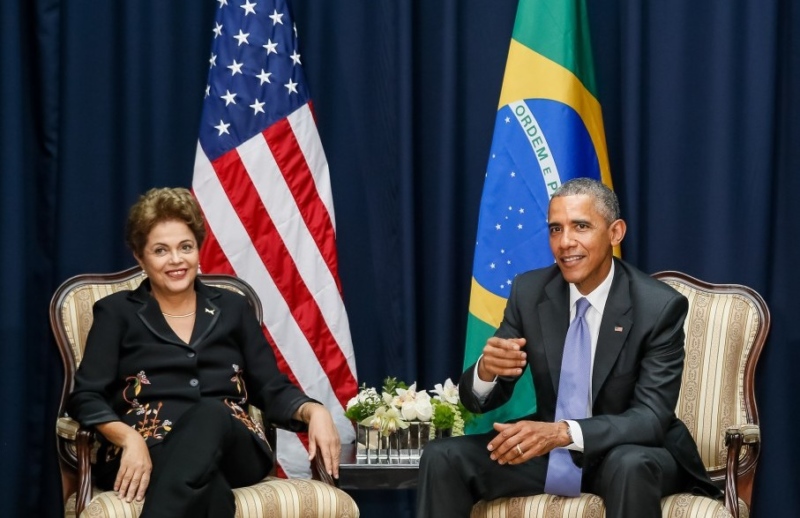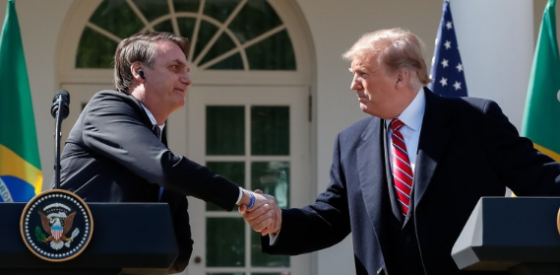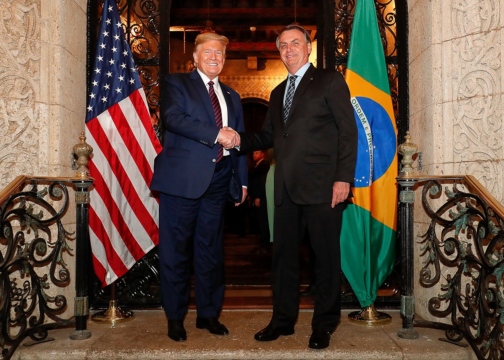
The Future of US-Brazil Relations
Can the US and Brazil rise above their differences and find reasons to cooperate more effectively?
The governments of Brazil and the United States seem increasingly intent on easing the current strains in their troubled relationship and building closer, more productive ties. They are openly discussing when it might be possible to reschedule President Dilma Rousseff’s state visit to Washington, planned for October 2013, but cancelled following Edward Snowden’s exposure of the US’s massive spying on Brazil. The Brazilian president and most of her advisors are, it appears, persuaded that better relations are vital for the nation’s economic revival and longer-term success—and ready to leave the Snowden affair to history. The US interest in restoring better bilateral relations was clearly signaled by Vice-President Biden’s presence at Dilma’s New Years Day inauguration, his second visit to Brazil in six months.
The two governments, however, have been timid in their proposals to one another. Both need to take a few bolder steps. They should learn something from the progress made in India-US ties in the past dozen years, when a once distant and sometimes adversarial relationship was turned into a valued partnership on several high priority issues. While disagreements continue to pervade Washington-New Delhi diplomacy, India is now crucial to US military, political, and economic strategy in Asia. In 1998, Washington angrily imposed harsh sanctions on India for detonating a nuclear weapon. Today, the US fully accepts India’s status as a nuclear power, is the country’s largest supplier of military equipment, and provides the latest technology to its civilian nuclear program. To be sure, this dramatic change reflected mostly shared security and defense priorities, which are minor components for US-Brazil ties. It is not the substance of the US-India accords, but the processes of negotiations and implementation that should be of interest.
First, the US and Indian negotiators focused hard on the central issues dividing the two countries. They did not resolve all of them, but ere able to forge compromises on many and make some headway on others. Second, keenly aware of their common interests, the two countries became deeply committed not to specific positions, but to a making the negotiations work—to come to a successful conclusion. They both made politically difficult concessions. Third, they did not let unrelated issues, even when politically charged, interfere with the accord’s implementation, for example, the highly publicized arrest in New York of an Indian diplomat or sharp US-Indian disagreements on WTO talks.
For the US and Brazil, bilateral economic issues are the only realistic basis for long-term cooperation. Brazilian officials know that US markets, investment capital, and technology transfer are needed for Brazil’s recovery and sustained expansion. US-Brazil trade has grown substantially in recent years, even as China has is now Brazil’s leading trade partner. Brazil, however, still accounts for only two percent of US’s overall trade, compared to about 15 percent for Mexico. True, Brazil is not on the US’s doorstep, but neither is China which sells as much to US consumers as Mexico. With appropriate policies and bilateral agreements, Brazil should be able to double or triple its exports to the US, which are mostly manufactured products, not commodities likes Brazil’s sales to China. Brazil should similarly be able to increase considerably its investment from the US, and draw far more extensively on US technology and science.
And time and again, the US has demonstrated its interest in more robust economic links with Brazil. Virtually every US presidents’ visit to Brazil for the past two decades emphasized commerce. Obama brought his entire economic cabinet with him and some 50 top corporate CEOs. US investors are aware of Brazil’s enormous resources and huge domestic market, and recognize the value of its political stability and peaceful South American neighborhood is also recognized. US government is also aware of the importance of better political ties with Brazil. The US needs Brazil’s help to pursue a meaningful agenda in Latin America. Brazil, for instance, would make a vital contribution to US-Cuban relations by assisting Cuba through what is certain to be a difficult transition period.
The changes needed to bolster US-Brazilian commerce will not come easily in Brazil, a country that has too long pursued highly nationalistic, state- directed economic policies and is now confronting a near recessionary economy. The good news is, however, that these changes would also resolve many of Brazil’s critical domestic challenges, and are already on the agenda of Dilma’s economic team. They include reforms to open Brazil’s markets—reducing tariffs and curb subsidies and procurement advantages for national firms. Selling to and buying from Brazil should be made easier by improving port facilities and the transport infrastructure generally. Making Brazil’s business environment easier to navigate is especially important, demanding reforms in complex, time consuming tax and regulatory systems and archaic labor codes. Getting them done will require political skills and commitment more than economic expertise.
Washington will have also to make changes and concessions. US agricultural subsidies and tariff need to be lowered, some substantially. Technology transfer, perhaps even to Brazil’s nuclear industry, needs to be simplified and encouraged. The US and Brazil together need to resolve long-standing disputes over intellectual property. The US might also be more welcoming of Brazil’s active participation on diverse global issues.
Resetting President Dilma’s state visit to Washington could contribute in multiple ways to building a new understanding between Brazil and the US. It should not be scheduled prematurely, however. Both governments need to agree on an agenda that incorporates the serious issues that separate the two countries, and begin to identify what has to be done to resolve them before the two presidents sit down to talk. Brazil and the US should to decide what outcomes they want before the visit and design a program and agenda to accomplish them.
Can the US and Brazil rise above their differences and find reasons to cooperate more effectively?
What came of Bolsonaro’s trip to the United States, and how might it affect U.S.-Brazil relations going forward?
A Latin America Advisor Q&A featuring expert’s viewpoints on the future of trade ties between the United States and Brazil.
 Blog do Planalto / Brasil / CC BY-NC-SA 2.0
Blog do Planalto / Brasil / CC BY-NC-SA 2.0

